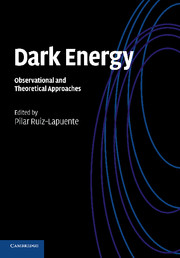Book contents
- Frontmatter
- Contents
- List of contributors
- Preface
- Part I Theory
- Part II Observations
- 5 Foundations of supernova cosmology
- 6 Dark energy and supernovae
- 7 The future of supernova cosmology
- 8 The space advantage for measuring dark energy with Type Ia supernovae
- 9 Baryon acoustic oscillations
- 10 Weak gravitational lensing, dark energy and modified gravity
- Index
- References
8 - The space advantage for measuring dark energy with Type Ia supernovae
Published online by Cambridge University Press: 05 July 2014
- Frontmatter
- Contents
- List of contributors
- Preface
- Part I Theory
- Part II Observations
- 5 Foundations of supernova cosmology
- 6 Dark energy and supernovae
- 7 The future of supernova cosmology
- 8 The space advantage for measuring dark energy with Type Ia supernovae
- 9 Baryon acoustic oscillations
- 10 Weak gravitational lensing, dark energy and modified gravity
- Index
- References
Summary
Introduction
The observed accelerated expansion of the universe (Riess et al., 1998; Perlmutter et al., 1999) is in conflict with longstanding expectations of cosmology. The dynamics of the universe is not dominated by the self-attraction of its contents as expected from “normal” gravity: in that case the rate of expansion would have been decelerating. In response to the observations, a slew of theories have been proposed to describe the repulsive force responsible for the acceleration. One possibility is that most of the energy content in the universe has, unexpectedly, a negative equation of state. Alternatively, there may be a problem with our standard conception of gravity: in the dimensionality of space, the existence of a geometric cosmological constant, or a breakdown of general relativity. The source of the observed accelerated expansion, whatever its underlying cause, is commonly referred to as “dark energy”.
The universe's expansion history is charted using brightness and redshift measurements of distant Type Ia supernovae (SNe Ia), which serve as standard candles. The bulk of the data used to discover the accelerating universe and provide the first coarse measurements of the dark energy parameters was obtained from ground-based observatories. As interest now shifts toward identifying the physics responsible for the acceleration, more distant supernovae and more accurate and precise distances as inferred from light curves and spectra are required. The stability of a space-based platform allows for an experiment that accurately and precisely maps the expansion history and probes dark energy models.
- Type
- Chapter
- Information
- Dark EnergyObservational and Theoretical Approaches, pp. 215 - 245Publisher: Cambridge University PressPrint publication year: 2010



